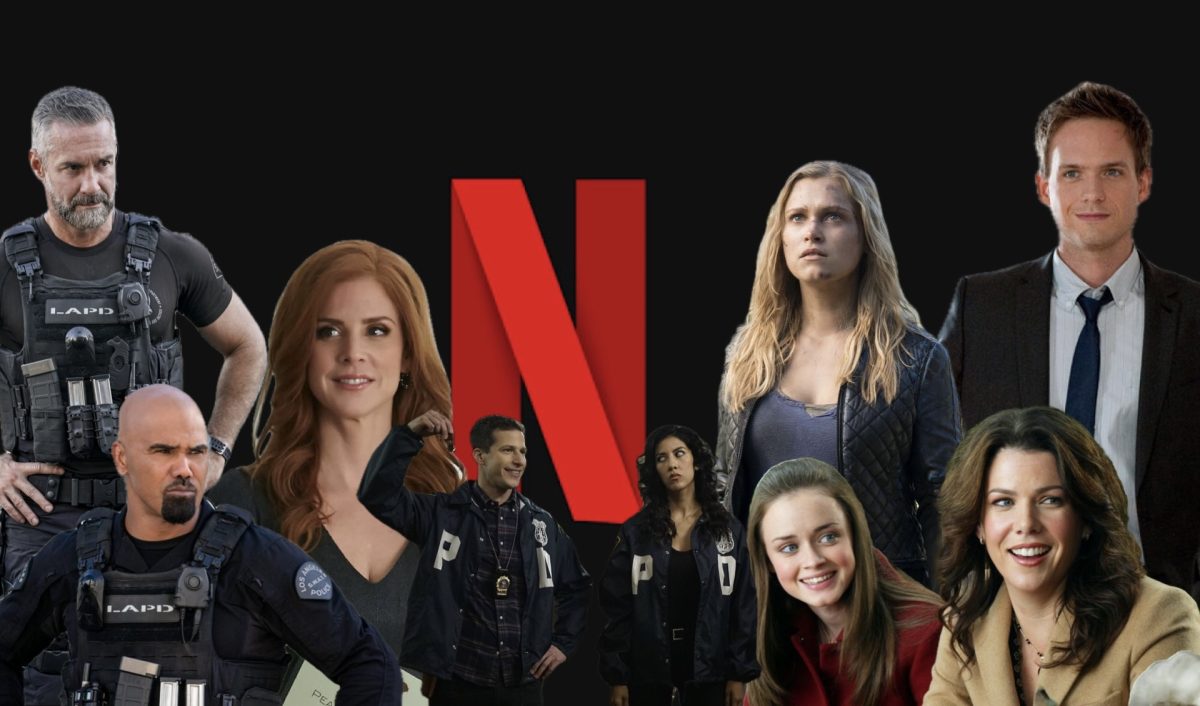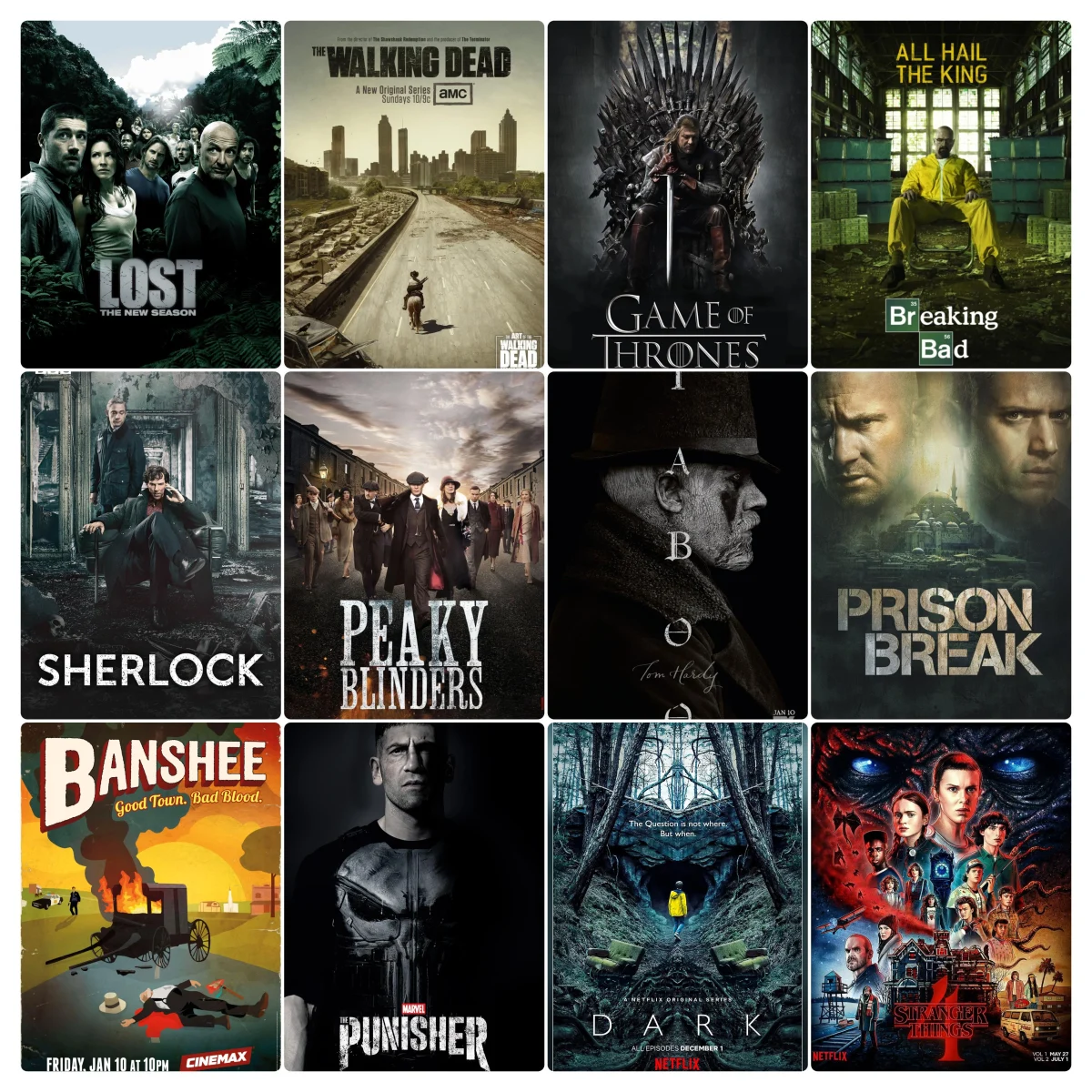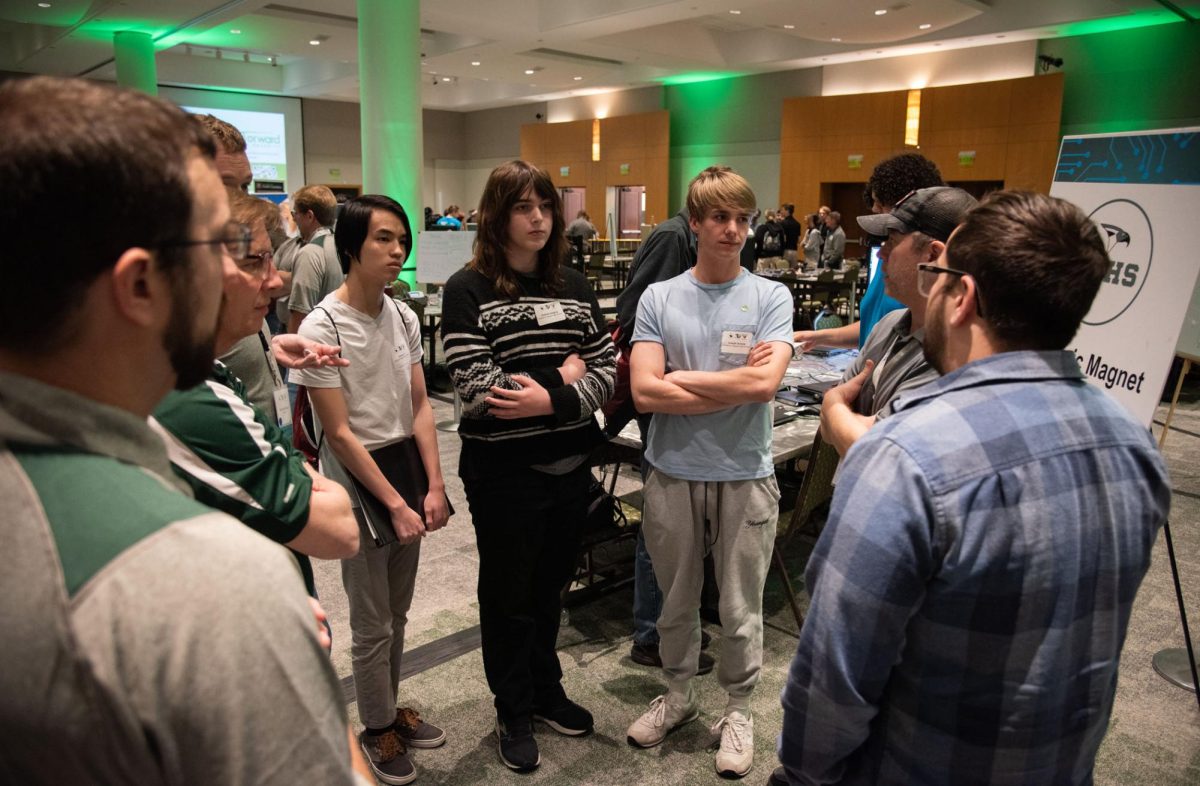As avid fans of the entire Star Wars franchise, we believe our experience gives us well-informed opinions on its content. With that expertise, we felt compelled to share our thoughts with the AMHS student body. Even if you’re not a fan of the Star Wars movies, The Clone Wars is a show everyone can get behind.
For some context, The Clone Wars takes place right after Episode II: Attack of the Clones and continues through the events leading into Episode III: Revenge of the Sith. While the show is marketed for kids, it offers complex lessons about friendship, loyalty, and loss. Each episode opens with a thought-provoking quote that reflects the themes explored in the episode. Some of the most memorable quotes include: “Who’s the more foolish, the fool or the fool who follows him?” (Season 4, Episode 6), “A failure in planning is a plan for failure” (Season 3, Episode 8), and “Fear is a great motivator” (Season 3, Episode 10).
In this article, we aim to guide you through the key characters and the best three-episode arcs the show has to offer (there may be spoilers ahead).
Character Ranking:
Darth Maul: Undoubtedly one of the most well-written characters in the entire show. The aura he brings to the show is just short of breathtaking. Maul’s double-bladed lightsaber is one of the coolest things in Star Wars, and in Clone Wars, this detail remains the same. Also, the build-up of his brother’s journey to find him is another one of the best arcs.
Anakin Skywalker: Another great main character in The Clone Wars. Battle after battle, Anakin always seems to succeed no matter what the circumstances entail.
Ashoka Tano: The padawan of Anakin throughout the show. Through Anakin, she learns the ways of the force and continuously becomes more and more powerful. She quickly became a fan favorite due to her break away from the Jedi and the final arc in the show, which is arguably the best one. She ended up being so loved she received her own live-action show Ashoka which debuted recently.
Rex: Rex is another fan favorite on the show, being the most recognizable clone. He is shown the most throughout the show working directly under Ashoka and Anakin. He provides many moral lessons throughout the show including not blindly following orders, being an individual, and sacrificing for the greater good.
Fives: Fives is another main clone in the show. He serves as a perfect example of what it means to be a great soldier. Fives also tries to stop Order 66 by investigating himself when his fellow clone Tup dies due to a chip. However, General Palpentine found out this information and was killed by Commander Fox.
Cad Baine: Cad Baine is one of the most notorious and skilled bounty hunters in the Star Wars: The Clone Wars series, and he stands out as a formidable and cunning adversary, even for the Jedi. His character is defined by his ruthlessness, intelligence, and professionalism, making him one of the deadliest guns-for-hire during the Galactic Republic era. He also stands out because of his outside-the-box thinking and his incredibly low morals that stand below some of the most feared bounty hunters in the galaxy.
Obi-Wan Kenobi: One of the central characters in Star Wars: The Clone Wars, his role in the series provides significant depth to his character and the overarching narrative of the Star Wars saga. As a Jedi Knight and later a Jedi Master, Obi-Wan navigates the complexities of the Clone Wars, balancing his duties to the Republic, his mentorship of Anakin Skywalker, and his own moral convictions. While mentoring Anakin he acts as a balance between rationality and irrationality. In many episodes, he guides Anakin and has to save him sometimes because of the ego-based decisions he makes.
Asajj Ventress: Asajj Ventress is initially introduced as a deadly assassin working for Count Dooku and the Sith. Asajj Ventress is one of the most compelling and complex characters in Star Wars: The Clone Wars. Introduced as a formidable Sith apprentice and assassin, her character evolves throughout the series, showcasing a rich backstory, emotional depth, and a journey of self-discovery that sets her apart from other characters in the Star Wars universe. Her sisterhood of the witches is also an important part of the show because of her constantly going back to them for spells and healing she needed throughout the different battles she was in.
Savage: Savage is Darth Maul’s brother. Savage’s character undergoes a dramatic transformation from being a humble warrior into becoming a powerful Sith apprentice
Arcs:
#1. Siege of Mandalore & Ashoka’s Order 66 – The greatest arc of all time. This had everything, and I mean absolutely everything. From lightsaber fights with dead Sith lords to the Clones turning on Ashoka to crashing a Venator and ending with an ominous visual of Darth Maul on Hoth at the end. For the sake of it, I will split this up into two parts, the siege of Mandalore as the first, and the second as Ashokas Order 66. The Siege of Mandalore is amazing, with it starting off with Darth Maul as the shadow and where season 5 ended with Maul’s crime syndicate taking over Mandalore completely. This prompts Ashoka and the Jedi order to visit Mandalore, which then leads to an epic fight between Ashoka and Darth Maul. Finally, Darth Maul is captured, and he is taken on board the Venator to be peacefully returned to Corrosiant. Upon being taken to the Venator, the crew gets two important holograms. The first is not to return to Corrisant, because something is happening at the Jedi temple. The second hologram received multiple minutes later: Order 66. This leads to one of the greatest 3 part episodes, with a continuous ranking of 9.8, 9.8, and 9.9, making them nearly perfect. In my opinion, all of these episodes should have been perfect 10s. In the words of the wise Thomas Hershey: “I couldn’t believe my eyes. I just sat and stared at the screen for probably 15 minutes. I was bedazzled by the episode’s ending, and after I started the first of the 3 episodes, I skipped practice to finish it.” I couldn’t agree more, Thomas. Even the Tales of the Jedi Episode, “Practice Makes Perfect” was an amazing call back to this perfect moment in time.
#2. Umbara – The greatest plot twist in the Clone Wars, and an outstanding representation of a Jedi that has manipulated the clones after being turned to the dark side. This also gives an insane backstory to Rex, showcasing his intelligence and why he is a leader. For example: When Rex finally learned of the Krells Conspiracy and got Anakin to assist. The Umbara Arc reflects the Clones’ position within the war, highlighting their differences and conveying that they too are people with feelings and motivations of their own with Krell trying to steal their individuality away from them, just as Palpatine’s Order 66 steals their free will.
#3. Ashoka Conspiracy – The second saddest episode of the whole series, and what most of us thought was going to be the actual ending to the whole series. The entire arc was amazing, and the twist was pretty good as well. Barriss, Ashokas “friend,” was well done and really was very deceitful. She was first seen in Season 2, then seen again on Umbara, and then mentioned repeatedly throughout the later seasons before this. Her turn to the dark side was unexpected, and even at multiple parts of this arc, I thought Ashoka might have somehow done this. This ending was unexpected with Ashoka saying how the Jedi have lost what makes them the Jedi, and even though she was not convicted of a crime, she said that she lost trust in her friends and that Anakin was the only one who trusted her, which is interesting as Anakin becomes the one to kill all the Jedi. This shows the true depth of the Jedi, and how they are not truly peacekeepers at this time of the war. There was also a great homage to this in Star Wars: Rebels, where we see Ashoka still as a force user, but in this case, she meets and fights Darth Vader with white lightsabers, showing how she doesn’t choose a side anymore as she believes neither the Jedi nor the Sith embodies her values.
#4. Fives’ Inhibitor Chip – The saddest of the episodes that is in the Clone Wars. This arc may seem slow at parts, but it pertains the best to the actual storyline of Revenge of the Sith. It is infuriating to watch Fives slowly learn about what happened to Tup, and finally piece the pieces together, then as he tries to tell Rex and Anakin about this he gets shot. Honestly, I think Fives deserved a better death than this, because of how cool he was in previous episodes. I think his being framed for trying to kill the chancellor was a smart way to paint this arc, as truly he was trying to help the Jedi out by trying to kill the chancellor. The Jedi were just too blind and stupid to realize that their own biggest enemy was living with them in the Jedi temple. Fives’ last words are: “This is the end. Forget the mission. Oh, nightmare. I’m free.” This truly shows how much pain and struggle he had to go through during the time, facing the fact that the death of Jedi master Tiplar was not him going crazy, but rather a preinstalled setting of killing the Jedi.
#5. Yoda Arc – This arc is truly great. This arc was a four-episode arc and truly showed how not even Yoda is perfect. His true failure was partaking in a war that clouded his judgment and stunted his capacity for compassion. Even as supposedly the wisest Jedi of his time, in this arc, Yoda is already beginning to realize how little he truly understands and how wrong he has been all this time. The arc humbles Yoda into a character just as prone to fallibilities as any other, and sets him up on his journey towards the more spiritual Yoda that appears in Episode V. This arc, however, was a fitting end to the show and the George Lucas era of Star Wars.
Overall, Clone Wars is a great show for anyone to get into no matter their age. It has some of the best-rated animated TV episodes of all time and the characters are all so different and well-written. With a total of 133 episodes and each episode being around 20 minutes, it is a show that will surely keep you busy and always wanting to watch more. It is a must-watch for anyone interested in the deeper stories of these iconic characters.















